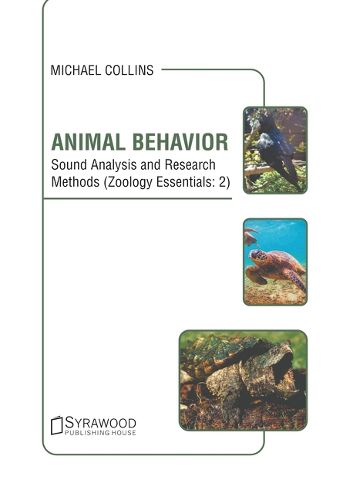Readings Newsletter
Become a Readings Member to make your shopping experience even easier.
Sign in or sign up for free!
You’re not far away from qualifying for FREE standard shipping within Australia
You’ve qualified for FREE standard shipping within Australia
The cart is loading…






Animal acoustic communication is integral to animal behaviour, involving the transmission of information through sound signals across mammals, birds, insects and marine organisms. These signals serve critical functions such as mate attraction, territory defence, social unity and predator alerts. Production of these signals relies on specialised anatomical structures like vocal cords in mammals and stridulatory organs in insects. The effectiveness of acoustic communication depends on environmental factors such as ambient noise and habitat structure, necessitating adaptations in signal frequency and amplitude. Simultaneously, animal behaviour explores interactions within environments, including mating rituals, communication strategies and social dynamics. Integrating ethology, ecology and evolutionary biology, this integrative field employs methodologies from field observations to advanced technologies like GPS tracking and video monitoring. Understanding acoustic communication and animal behaviour provides insights into ecological processes, aids in species conservation and informs strategies for managing human-wildlife interactions amidst environmental challenges. This book provides comprehensive insights into the field of animal acoustic communication and behaviour. It aims to shed light on some of the unexplored aspects of zoology and wildlife sciences. Also, it will provide comprehensive knowledge to the readers.
$9.00 standard shipping within Australia
FREE standard shipping within Australia for orders over $100.00
Express & International shipping calculated at checkout
Animal acoustic communication is integral to animal behaviour, involving the transmission of information through sound signals across mammals, birds, insects and marine organisms. These signals serve critical functions such as mate attraction, territory defence, social unity and predator alerts. Production of these signals relies on specialised anatomical structures like vocal cords in mammals and stridulatory organs in insects. The effectiveness of acoustic communication depends on environmental factors such as ambient noise and habitat structure, necessitating adaptations in signal frequency and amplitude. Simultaneously, animal behaviour explores interactions within environments, including mating rituals, communication strategies and social dynamics. Integrating ethology, ecology and evolutionary biology, this integrative field employs methodologies from field observations to advanced technologies like GPS tracking and video monitoring. Understanding acoustic communication and animal behaviour provides insights into ecological processes, aids in species conservation and informs strategies for managing human-wildlife interactions amidst environmental challenges. This book provides comprehensive insights into the field of animal acoustic communication and behaviour. It aims to shed light on some of the unexplored aspects of zoology and wildlife sciences. Also, it will provide comprehensive knowledge to the readers.